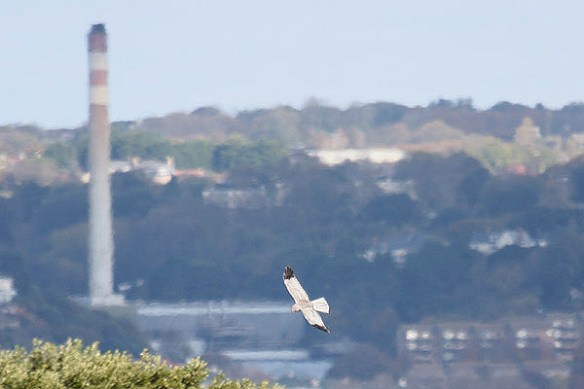It is becoming increasingly obvious that our already declining bird populations, threatened by widescale habitat and climate changes, are put under further pressure through the actions of humans. Scientists with Environment Canada have found that human-related activities destroy roughly 269 million birds and 2 million bird nests in Canada each year. Most human-related bird deaths (about 99%) are caused by impacts of feral and pet cats, and collisions with buildings, vehicles, and electricity transmission and distribution lines.
Over the last four years, 20 Canadian scientists conducted extensive analyses that enabled them to release the first-ever estimates of annual direct bird mortality from human-related sources. The results have just been published in a special issue of Avian Conservation and Ecology.
“Because birds are excellent indicators of biodiversity, the newly-released articles from Environment Canada highlight areas where broader biodiversity may be impacted”, said Dr George Finney, President of Bird Studies Canada. “These results provide a crucial first step toward understanding the relative importance of bird mortality factors, and will inform future research directions, conservation actions, and policy decisions.”
 Cats appear to kill as many birds as all other sources combined. Feral and pet cats are believed to kill more than 100 million birds per year in Canada. An estimated 60% of those are killed by feral cats. Bird species that nest or feed on or near the ground are especially vulnerable to cat predation.
Cats appear to kill as many birds as all other sources combined. Feral and pet cats are believed to kill more than 100 million birds per year in Canada. An estimated 60% of those are killed by feral cats. Bird species that nest or feed on or near the ground are especially vulnerable to cat predation.
“We are deeply troubled by the disquieting research published today on the number of birds killed every year in Canada due to human-related activities”, said Ian Davidson, Executive Director of Nature Canada. “Fortunately, there are concrete and sensible ways that people and governments can prevent the needless death of birds, especially now during the migratory season.”
Collisions with electricity transmission and distribution lines have been identified as the second-largest human-caused source of bird mortality in Canada. Between 10-41 million birds per year are killed by collisions with transmission lines; between 160,000 and 800,000 birds are electrocuted by distribution lines; and about 400,000 nests are destroyed annually due to vegetation clearing under powerlines.
 Collisions with residential and commercial buildings are the third-highest of the human-related sectors, killing an estimated 16-42 million birds each year – mostly at houses. Following bird-friendly building guidelines can help individuals and building managers reduce the risk to birds. Using commercial products, special glass, or homemade solutions to make windows more visible to birds can reduce daytime collisions. Night-time window collisions can be reduced by leaving lights off in low-rise and high-rise buildings.
Collisions with residential and commercial buildings are the third-highest of the human-related sectors, killing an estimated 16-42 million birds each year – mostly at houses. Following bird-friendly building guidelines can help individuals and building managers reduce the risk to birds. Using commercial products, special glass, or homemade solutions to make windows more visible to birds can reduce daytime collisions. Night-time window collisions can be reduced by leaving lights off in low-rise and high-rise buildings.
An estimated 13.8 million birds are killed annually by colliding with vehicles on Canada’s primary and secondary roads.
There are about 10 billion birds in Canada. The estimated total of 269 million bird deaths per year caused by human-related factors constitutes less than 5% of the overall population. Bird deaths from other causes (such as natural predation, disease, severe weather, or habitat loss) are not reflected in the estimates.
Whilst Canada is undoubtedly a very large country we can still see that the Channel Islands will contribute annually to the global, and un-estimated, man-made, and avoidable, toll of wild birds. We are increasingly beginning to realise how important our islands are too for migratory birds just passing through. How many each year fail to reach their destination through some man-made structure in their path that they don’t see? Or from the house cats and feral cats that are found everywhere in Jersey except on our offshore reefs – and even there birds aren’t safe from man-made problems! And, when thinking of feral cats, is it any wonder why we have so few lizards in some places!





